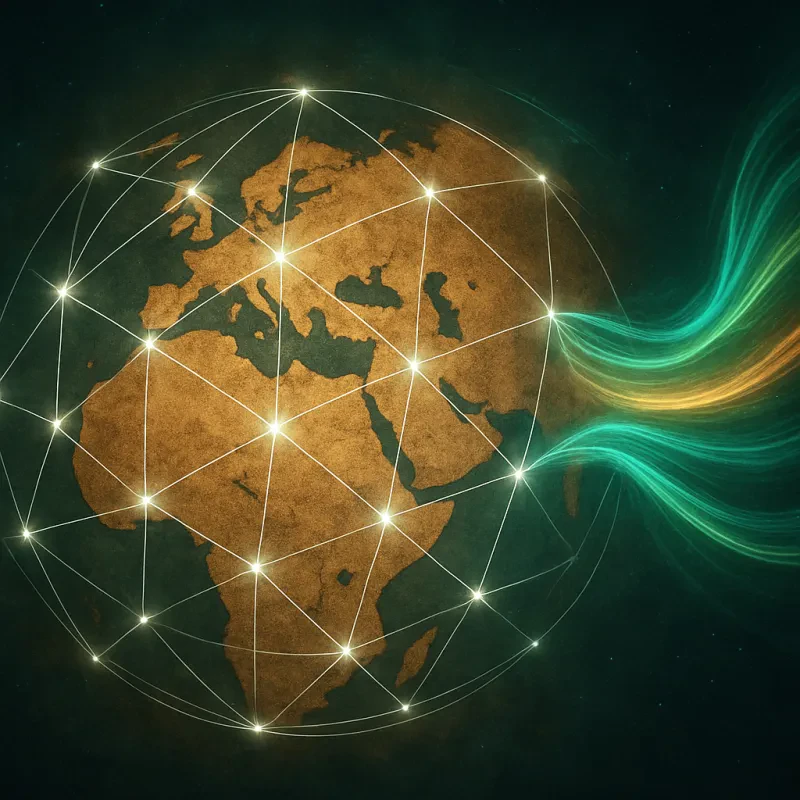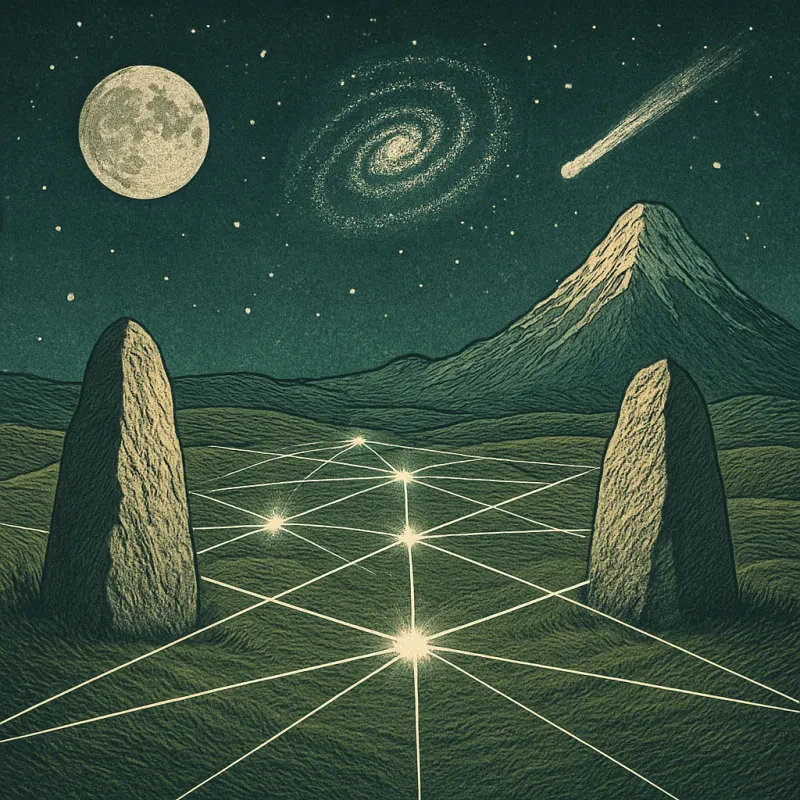Alfred Watkins was a British businessman and amateur archaeologist who made a significant impact on the world of ancient geography with his intriguing concept of ley lines. Born in 1855, Watkins had a lifelong fascination with the landscapes of rural England. His passion for photography, combined with his keen interest in ancient sites and landmarks, eventually led him on an extraordinary journey of discovery.
In 1921, while exploring the Herefordshire countryside, Watkins stumbled upon a pattern connecting various ancient sites such as stone circles, burial mounds, and churches. He referred to these alignments as "ley lines" and theorized that they represented a network of pathways used by ancient peoples. His observations were not merely coincidental; they suggested that the ancients had a profound understanding of the geography around them, linking their spiritual and practical activities through these invisible lines in the landscape.
Watkins documented his findings in his book "The Old Straight Track," published in 1925. In it, he outlined his theories and provided detailed maps showcasing the ley lines across England. His work inspired both enthusiasts and skeptics alike, sparking debates about the significance of these alignments. While some viewed ley lines as mere coincidences, others embraced the idea that ancient civilizations had left behind a hidden network, interconnecting various sacred sites across the earth.
Watkins' journey was not only about mapping physical locations but also about connecting with the past. His exploration encouraged a deeper appreciation for the cultural and spiritual heritage embedded in the landscapes we often overlook. Although some dismissed his theories over the years, the idea of ley lines remains alive in modern culture, continuing to intrigue researchers, spiritual seekers, and those fascinated by the mysteries of the ancient world.
Understanding Ley Lines and Their Origins
Ley lines are imaginary alignments that connect various sacred sites, landmarks, and ancient structures across the landscape. These lines are often thought to hold mystical significance, hinting at a deeper connection between the earth and the ancient peoples who inhabited it. The concept was popularized in the early 20th century by Alfred Watkins, an English antiquarian and photographer, who proposed that ancient cultures had a remarkable understanding of geography and spiritual energy.
The origins of ley lines can be traced back to Watkins's exploration of rural England in 1921. While wandering through the countryside, he noticed that certain ancient sites, such as stone circles, churches, and burial mounds, seemed to align perfectly when drawn on a map. This observation led him to propose that these alignments were not mere coincidences but purposeful placements by ancient civilizations. He believed that these cultures had a profound awareness of the earth's energy and used it to create pathways of spiritual significance.
Watkins's ideas sparked interest and debate, paving the way for further studies on ley lines and their possible effects on human consciousness. Some enthusiasts suggest that ley lines serve as energy grids that can influence the behavior and well-being of people who live near them. Others consider them to be a reflection of humanity's deep-rooted connection to the land and nature. Despite the lack of scientific evidence supporting these claims, the concept of ley lines continues to capture the imagination of many, inviting people to explore the mysteries of the past.
The Impact of Ley Lines on Culture
The concept of ley lines, proposed by Alfred Watkins, suggests that there are invisible pathways connecting various sacred sites and landmarks across the landscape. These lines have captivated the imagination of many, not just for their mystery, but also for their impact on culture and spirituality throughout history. Travelers and spiritual seekers often incorporated the idea of ley lines into their journeys, believing that these paths held mystical significance and energy.
In the realms of art and literature, ley lines have inspired countless works. Artists have drawn on the theme of these connections to explore humanity's relationship with nature and the cosmos. Writers have woven ley lines into the fabric of their stories, creating tales that blend history, mythology, and adventure. The idea that the earth is interconnected through these pathways invites individuals to ponder their place within a larger tapestry of existence.
Moreover, the notion of ley lines intersects with various cultural practices, including paganism and modern spiritual movements. Many practitioners seek to align their rituals and ceremonies with these invisible currents, believing that doing so strengthens their connection to the earth and enhances their spiritual experiences. This fusion of ancient wisdom with contemporary beliefs demonstrates how ley lines have transcended their original concept, evolving into a symbol of unity and harmony in diverse cultures.
In recent years, the popularity of ley lines has grown, especially within the realms of alternative spirituality and new age movements. Many enthusiasts actively promote ley line-related tours and workshops, highlighting the significance of these paths in personal growth and the exploration of consciousness. The impact of ley lines on culture continues to unfold, revealing the deeper connections that people seek in an increasingly fragmented world.
Exploring Modern Interest in Ley Lines
The concept of ley lines, popularized by Alfred Watkins in the early 20th century, has captured the imagination of many. These invisible lines, believed to connect ancient monuments and sacred sites, have become a point of interest for both amateur enthusiasts and serious researchers. Today, there is a renewed fascination with these alignments, as they blend history, geography, and a bit of mysticism.
Modern interest in ley lines is fueled by a diverse community. From spiritual seekers and earth mystics to archaeologists and historians, people are drawn to the idea that there are hidden patterns in the landscape. Many claim that these ley lines carry a type of energy, prompting individuals to explore the sites along these paths. This wave of exploration often leads to a deeper connection with the history and heritage of the land.
Technology has also played a significant role in rekindling interest. With the advent of mapping software and GPS, enthusiasts can now more easily identify potential ley line alignments. Online forums and social media groups share findings from around the world, creating a communal space for anyone interested in this phenomenon. This digital age allows for a level of collaboration and discovery that Watkins himself could only dream of.
Additionally, the resurgence of yoga, meditation, and holistic practices has brought ley lines into discussions about energy and vitality. Many believe that aligning oneself with these energetic pathways can enhance meditation experiences or even facilitate healing. Workshops and retreats focusing on ley lines and earth energies have become popular, further cementing their place in modern spiritual practices.


